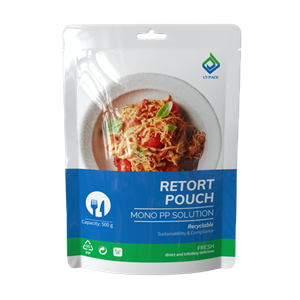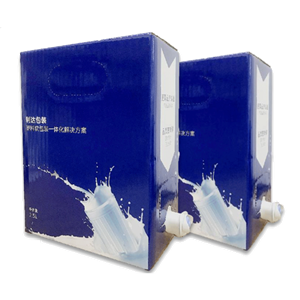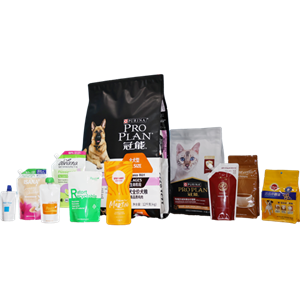BOPET-Biaxial stretching of film
(1) Biaxially Oriented Polyester Film Production Process
1.Ingredients and Mixing: The primary raw material required for the production of biaxially oriented polyester (BOPET) film is polyester film masterbatch. Depending on specific requirements, substances such as silica, titanium dioxide, calcium carbonate, etc., can be added. Additionally, different types of polyester film masterbatch, such as APET or PETC, can be chosen based on the production process requirements to achieve specific functionalities.
2.Crystallization and Drying: The polyester film masterbatch must undergo a crystallization and drying process before biaxial stretching. The main objectives of the crystallization and drying process are to raise the softening point of the polymer, preventing particles from sticking together and forming lumps during the melting process. Simultaneously, the drying process removes moisture, as water content in the polymer can lead to hydrolysis or bubble formation during melting. Typically, the moisture content in the polymer is kept below 50 ppm.
3.Melt Extrusion: The melt extrusion process involves equipment such as an extruder, metering pump, and filter. The extruder melts and plasticizes the material, while the metering pump provides stable pressure, ensuring that the molten material has enough pressure to overcome the flow resistance, ensuring uniform film thickness during production. The filter removes impurities from the molten material, with commonly used disc filters made of stainless steel sintered felt, and the filtration precision requirement is typically 400 to 600 mesh.
4.Casting System: The biaxially oriented polyester (BOPET) film production process includes a casting system consisting of a die, chill roll, and casting attachment device. The quality of the die affects the thickness and uniformity of the cast film. The die temperature typically ranges from 275 to 280°C. The chilling role in the casting system rapidly cools the molten polyester, allowing it to solidify quickly into an amorphous cast film.
5.Longitudinal Stretching: The specific process of longitudinal stretching involves preheating the thick cast film using a longitudinal stretching machine. The principle involves utilizing speed differences between rollers. This machine typically consists of preheating rollers, stretching rollers, cooling rollers, and a drive mechanism. Longitudinal stretching processes often use multiple stretching zones, and the stretching methods include low-temperature large-gap stretching and high-temperature small-gap stretching.
6.Transverse Stretching (TDO): Another crucial production process in the biaxially oriented polyester film production is transverse stretching. The transverse stretching process is mainly accomplished by a transverse stretching machine with a complex structure. The machine typically includes an oven, ironing elements, chains, guides, lubrication systems, etc. Ironing elements on both sides of the transverse stretching machine, coupled with a hot air circulation system, heat and pre-stretch the film. After passing through processes like stretching, buffering, shaping, and cooling, the film undergoes transverse stretching.
7.Traction Winding and Slitting: The final steps in the production of biaxially oriented polyester film involve traction winding and slitting. Traction winding and slitting are achieved through traction rollers, cooling rollers, flattening rollers, and tracking rollers for traction, and a winding machine for winding. The large film roll, after winding, undergoes slitting based on production requirements on a slitting machine. The product is then completed through inspection and packaging processes.
(2)BOPET Film Characteristics:
BOPET exhibits excellent comprehensive performance, as evidenced by the following features:
1.High Mechanical Performance: BOPET has exceptional tensile strength, approximately nine times that of PE film. It is rigid, stiff, and can endure folding tens of thousands of times.
2.High Gas and Moisture Barrier: BOPET possesses high gas and water vapor barrier properties, classifying it as a medium barrier material.
3.Superior Optical Properties: BOPET demonstrates excellent optical properties with high glossiness, clarity, and a light transmittance of up to 90%.
4.Excellent Electrical Insulation: BOPET has good electrical insulation properties.
5.Wide Operating Temperature Range: BOPET can be used in a broad temperature range, with the ability to withstand long-term use between -60°C and 120°C, and short-term maximum operating temperatures of up to 150°C.
6.Odorless, Tasteless, Non-Toxic: BOPET meets food hygiene requirements as it is odorless, tasteless, and non-toxic.
7.Resistance to Grease and Chemicals: BOPET is resistant to oil and general chemical corrosion.
8.Environmentally Friendly: PET is an environmentally friendly material that can be recycled, reused, and does not cause environmental pollution.
BOPET, owing to its high surface energy, excellent dimensional stability of the base material, and good temperature resistance, serves as an excellent coating substrate. The barrier properties of VmPET, a PET film modified through vapor deposition, will be discussed in the next section.
Statement: This article is written by LD PACK and all rights reserved by LD PACK. The content is for reference only. Please correct any errors. Shall not be reproduced without permission, otherwise LD PACK will reserve the right to pursue its legal liability. If you have any technical questions, please email sales@ldpack.com for a discussion.




